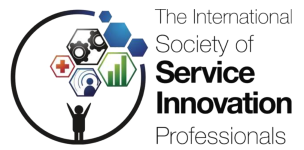by Charlie Bess, Service Futures SIG (SFSIG)
I was in a meeting discussing business and technology trends and the impact on technology adoption… and Venn diagrams started dancing through my head. We were showing examples of how services were changing in various industries. Each industry adopted services in somewhat similar but distinct ways. We started to talk about agriculture and came up with relatively few examples of service adoption. Right before we moved on to the next industry, I said something like: “There really isn’t that much difference between the shifts taking place in agriculture and process manufacturing.”
This got into a whole philosophical discussion about how agriculture deals with living things, so it can’t be automated or have services applied to the extent that manufacturing does. I tried not to bring up the agricultural segments of wine and beer production, but couldn’t help myself.
Then, just to get people out of their comfort zone, I said, “well if that’s the case, then agriculture is really more like “health care.” Which started a whole other vector of discussion.
In the end, we all reached a perspective that in many ways the abundance of technology and the pressures of business are allowing many of these industry differences to dissolve. They may have different names (e.g., health care claims adjudication vs. warranty claims assessment vs. CRM), but there are definitely overlaps in what needs to be done and the techniques applied. The recognition of the similarities may also allow a new dimension of differences to come to the surface that were hidden before.
The possibilities of this polymorphic view, pulling advances in one area, and applying them to others, is an important part of any innovation exercise. We might need to shake up our preconceptions though about where and how innovations can be reapplied.
Recently, in the Service Futures SIG meetings, we’ve been discussing gamification and its metrics based, behavior modification ability, to address the adoption and effectiveness of organizational change. This is a great example of an approach that has significant industry specific and yet overlapping applications.
